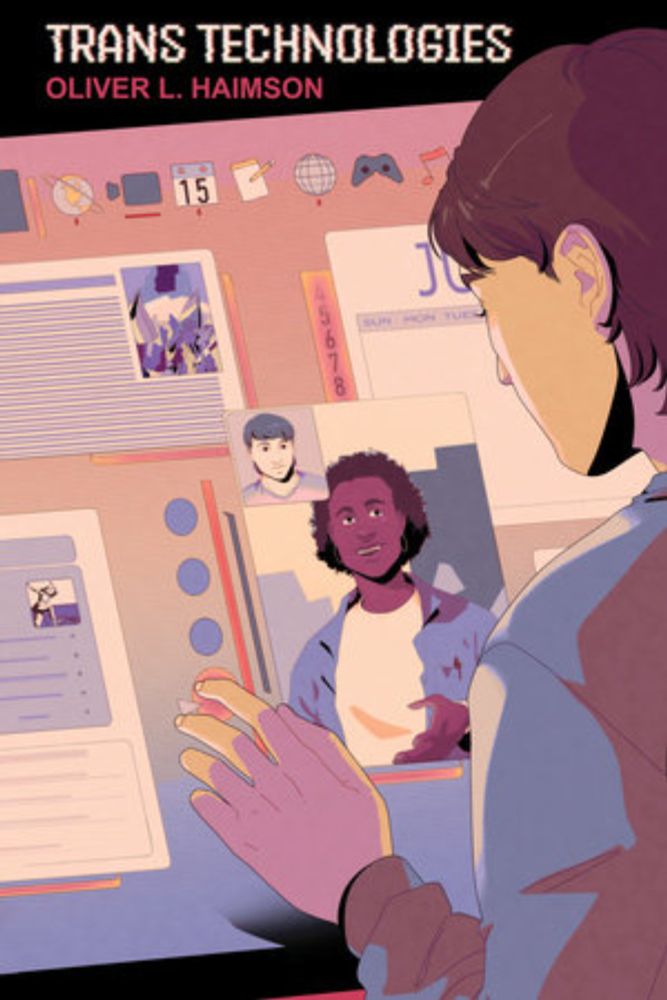
Seeing Like a Supply Chain:
Data in the Circuits of Global Trade
Miriam Posner

Contents
Acknowledgments
Introduction
1. Systems at War in a Hostile Universe: The Informatic Roots of Logistics
2. Exploding the BOM: Digitizing Production in the Cold War
3. Phantoms, Backflushes, and the Trumpet of Doom: The Dilemmas of Just-in-Time
4. Inventing SCM
5. The Sensate Company in the Animate Cloud
6. Transferring Risk in a Calamitous World
It’s in 😬😱
09.09.2025 00:24 — 👍 309 🔁 14 💬 32 📌 3

SFRW • Issue Two Release Party • Thursday, August 28 at Et al.
• Readings with an element of chance
Featuring Sophia Wang Michael Walker • Ted Barrow
• Amanda Guest • Craig Calderwood • Anne Walsh
Rose Linke • Christina Svenson • Rod Roland
SAN FRANCISCO REVIEW OF WHATEVER ISSUE TWO RELEASE PARTY REMINDER! TOMORROW, Thursday, August 28, at 6 p.m. onward, at Et al., 2831A Mission Street. There will be readings with an element of chance! And pizza and beers, and whatever else turns up. See you tomorrow! Looking forward. xx
27.08.2025 19:10 — 👍 8 🔁 3 💬 1 📌 0
Prof. Susan Stryker puts on her "academic drag" & marshals the "cultural capital" of her doctoral training in gender studies to say that Gavin Newsom did not do his homework well enough & he would fail her class. 🔥🔥🔥
27.08.2025 13:06 — 👍 34 🔁 13 💬 1 📌 0
Two things that seem clear to me after listening to ppl talk about this are: 1) that there just is no good options for SCMS right now. Speaking out means taking a risk, but so does staying silent. People are already being fired, reprimanded, or self-censoring out of fear of these.
26.08.2025 15:20 — 👍 7 🔁 2 💬 1 📌 0

Cover of Indigenomicon: American Indians, Video Games, and the Structures of Dispossession by Jodi Byrd. The cover art features a stylized, pixelated landscape that transitions into a painted forest scene. A river runs along the bottom, where a figure sits in a canoe. In the background, a wooden palisade, tall trees, and two stork-like birds in flight are depicted.
In "Indigenomicon," @arsavium.bsky.social examines the differences between settler colonial studies and Indigenous studies by bringing video game studies into conversation with Black studies, queer studies, and Indigenous feminist critique. Read the intro for free now: buff.ly/RM90jF8
25.08.2025 14:03 — 👍 28 🔁 16 💬 2 📌 1
I'll be chatting on KQED this morning at 10am PST, if you'd like to tune in!
22.08.2025 14:36 — 👍 6 🔁 2 💬 0 📌 0
As the deadline to submit comes up, please consider whether SCMS is a venue that aligns with your values.
19.08.2025 15:10 — 👍 11 🔁 5 💬 0 📌 0
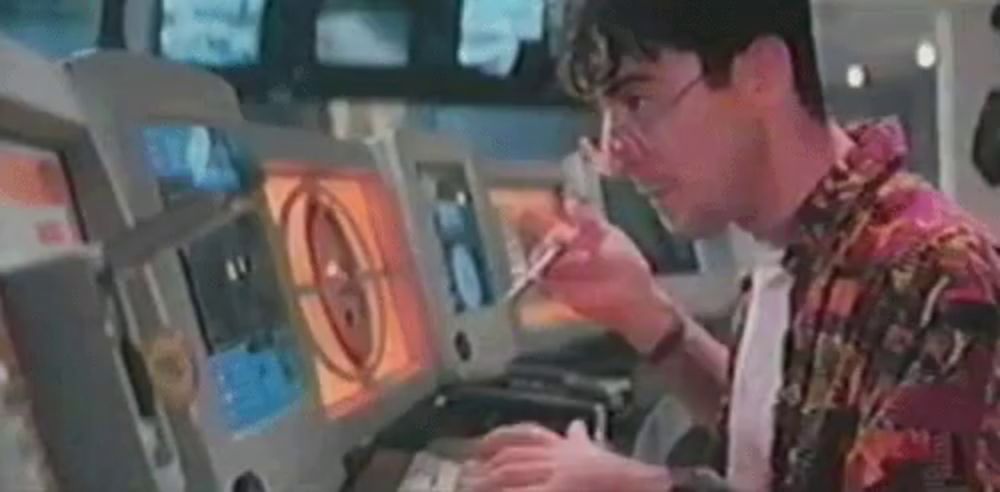
a man wearing glasses is sitting at a desk in front of a computer monitor .
ALT: a man wearing glasses is sitting at a desk in front of a computer monitor .
Hey, hey... @sigcisconf.bsky.social--@shothisttech.bsky.social's Special Interest Group for Computing, Information & Society--is on Bluesky!
Follow them if you're interested in #ComputerHistory or the social & political impact of digital technologies like #AI.
#histsci #histtech #histSTM 🗃️📜📚
10.07.2025 20:58 — 👍 18 🔁 9 💬 0 📌 1

I made a piece of software! It’s called the film|minutes video|graphic workstation. It’s pretty niche but cool if you want to take notes or do very close readings of films/videos.
15.07.2025 05:41 — 👍 171 🔁 50 💬 9 📌 13

"Copy of series of graphs showing the 'guitar' spike alone and with various Dolby SR adjustments."
Okay, while I'm here, something sound studies and media tech history folks may find of interest: the Ray Dolby papers were recently processed and are now available for research at Stanford's Silicon Valley Archives. A bunch of stuff has been digitized too: exhibits.stanford.edu/dolby
14.07.2025 04:36 — 👍 16 🔁 4 💬 0 📌 0

a photograph of a long-haired child, standing next to their TV, which displays the end screen of a video game
Our peer-reviewed article this issue is 📸 SCREENSHOTS OR IT DIDNT HAPPEN by @jacobgaboury.bsky.social 📺about the long history of screenshot photography within game culture 🏆
romchip.org/index.php/ro...
03.07.2025 15:36 — 👍 15 🔁 3 💬 1 📌 0

An AI image shared by Same Altman in 2023
You can find almost the same use of light in AI slop. Unlike CGI renderings, AI images aren't based on a simulation of light being reflected from objects in virtual space but on a statistical distribution of color values on a flat surface, which makes them more akin to painting than photography
3/
02.07.2025 07:56 — 👍 82 🔁 7 💬 1 📌 1
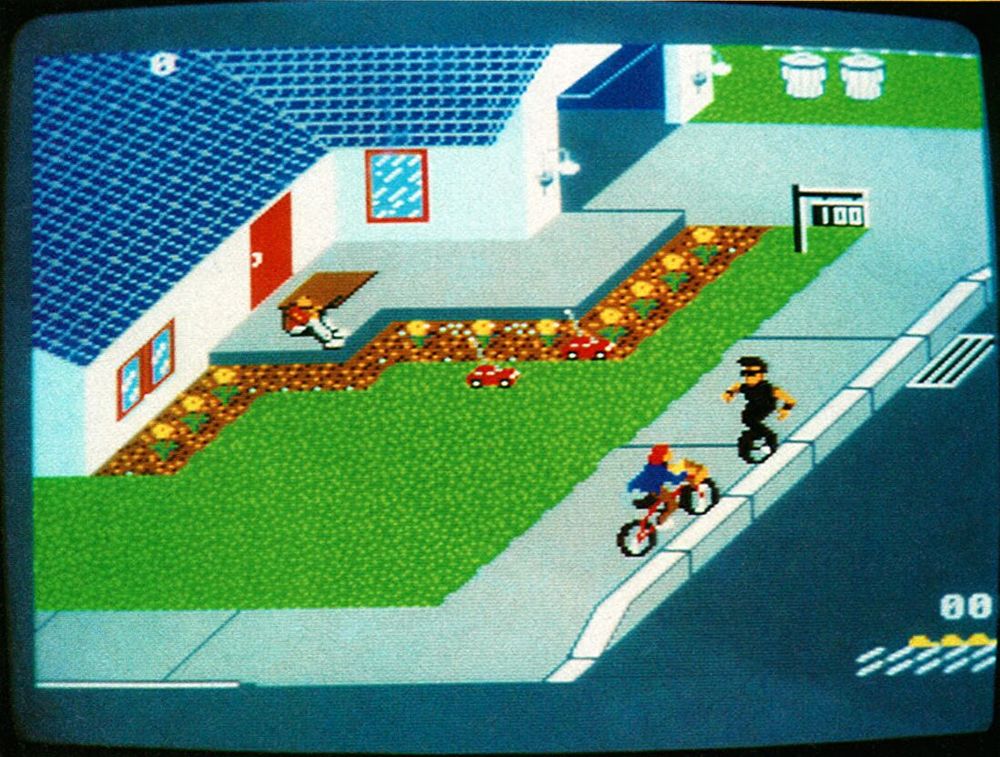
A screen photograph of the game Paperboy (1985).

A photograph of a young girl in front of the end screen for Super Mario Bros. 2 (1988).
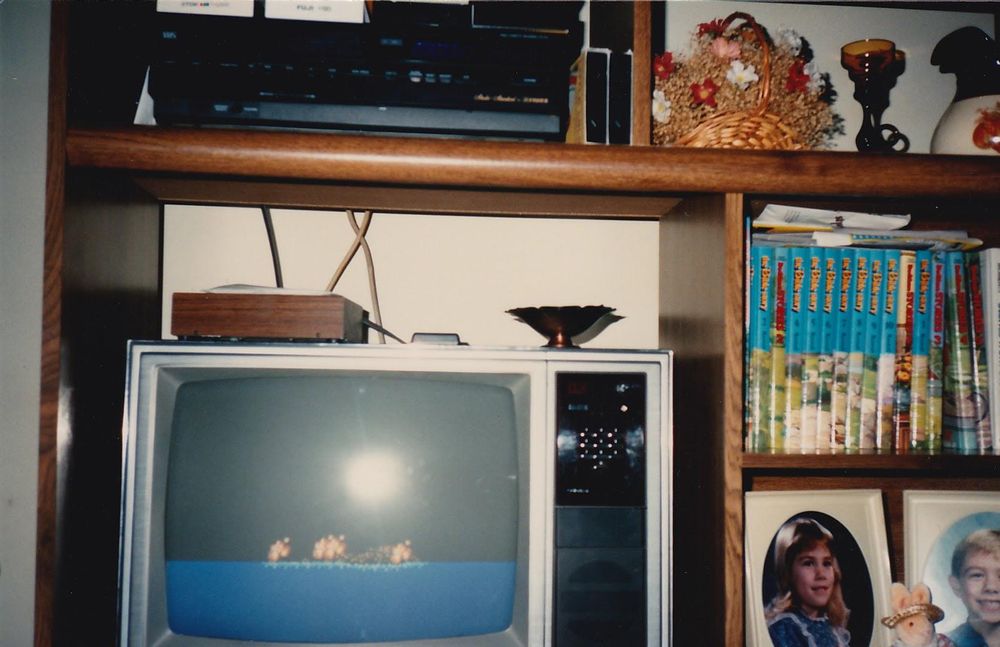
A photograph of a television and its domestic context, with the TV showing the end screen of Contra (1987).
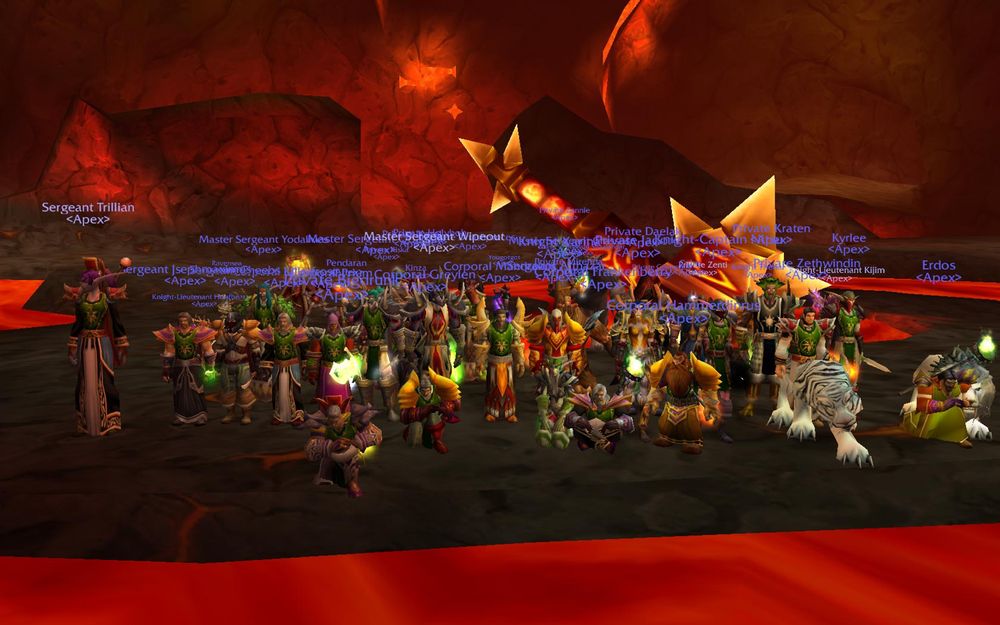
A screenshot showing a raiding guild after defeating Ragnaros in the Molten Core raid dungeon of World of Warcraft (2004).
The new issue of @romchip.bsky.social is out, and includes new work by me on the history of video game screenshots and the way we photographed our game screens to capture images of ourselves: romchip.org/index.php/ro...
The rest of the issue is fantastic, check it out!
02.07.2025 17:49 — 👍 44 🔁 19 💬 3 📌 0
Thanks Ari!
03.07.2025 14:02 — 👍 0 🔁 0 💬 0 📌 0

This is one story of the history of video game screenshots: a transformation from a culture of vernacular documentation into a now-ubiquitous function on all contemporary game platforms, compelling us to capture and share the way we play. Yet this practice, at its origins, is much more significant if taken within the broader context of screenshot histories. Early high-score photography is one of the first moments in which users photographed their screens not simply to document the images that appeared on them, but to document a part of themselves they identified in the images they saw. In a moment that sees the simultaneous growth of personal computing and interactive games, we find a form of computational personhood that is identified with and in the screen image. While this may not be the first moment this form of identification was felt, its growth into a broad subcultural practice through high-score photography suggests a much larger shift that has only expanded in the subsequent decades. Today our screenshots no longer feel like photos of a computer, but rather images of our lives as they are lived through and with computation. Games play an essential role in this transformation, and in doing so they document and archive cultures of use that would otherwise be lost. To hold out these images as significant at once recaptures these cultures of gaming while also attending to the ways they have transformed our sense of self as and with technology.
TLDR
02.07.2025 18:35 — 👍 0 🔁 0 💬 0 📌 0

Screenshots are one of the most ubiquitous visual forms of the twenty-first century. Each day billions of screenshots are created on smart phones and personal computers to document the mundane and spectacular interactions of users with their computational machines. Perhaps the most publicly visible use for screenshots today is as proof of action with or through a computer—that is, as evidence of interaction. We use screenshots to document the microworld of the computer as a space of personal identification and individual expression. In this article I argue that this practice has its origins in the video game cultures of the late 1970s and early 1980s. In this period, game publishers and magazines used screenshots to document the visual appearance of games for advertisements and publications. However, quite quickly users began to document and photograph their own experiences of play through photographs of personal achievements such as high scores and end screens. Game companies like Activision and magazines like Nintendo Power encouraged this practice, offering rewards and publishing scores to foster participation. These vernacular practices marked a shift in how users related to computational systems—not merely as tools but as expressive environments where actions were documented and identified with. Over time, these practices evolved into a broader visual culture of play, encompassing screen selfies, player portraits, and early cultures of competitive play such as speedrunning. Far from trivial ephemera, these images indexed the rise of a new computational personhood, where users saw themselves reflected in their screen interactions. In situating this history within this broader discourse, I suggest that unprofessional, everyday practices of gaming and its visual documentation reveal the social and personal dimensions of digital life. Screenshots become not only technical artifacts but also records of self, community, and computational experience.
02.07.2025 18:04 — 👍 3 🔁 0 💬 1 📌 0

A screen photograph of the game Paperboy (1985).

A photograph of a young girl in front of the end screen for Super Mario Bros. 2 (1988).

A photograph of a television and its domestic context, with the TV showing the end screen of Contra (1987).

A screenshot showing a raiding guild after defeating Ragnaros in the Molten Core raid dungeon of World of Warcraft (2004).
The new issue of @romchip.bsky.social is out, and includes new work by me on the history of video game screenshots and the way we photographed our game screens to capture images of ourselves: romchip.org/index.php/ro...
The rest of the issue is fantastic, check it out!
02.07.2025 17:49 — 👍 44 🔁 19 💬 3 📌 0

Platforms and the Moving Image › meson press
Platforms and the Moving Image offers a multifaceted look at how digital platforms shape and are shaped by economic, cultural, and political forces. The collection examines the effects of gaming, soci...
Platforms and the Moving Image book now out! Edited by Philipp Keidl and Jana Zündel, featuring the work of many amazing scholars, and mostly junior scholars, including work on Netflix, IMDb, KaraGarga, smart homes, Disney+, ALTBalaji, and much more -
meson.press/books/platfo...
20.06.2025 14:03 — 👍 27 🔁 7 💬 1 📌 3

Bantam Tools NextDraw™
Bantam Tools
I've heard good things about Bantam Tools NextDraw but keep waffling. This is a very cool/depressing application, I like it bantamtools.com/collections/...
18.06.2025 20:34 — 👍 0 🔁 0 💬 1 📌 0
Ooh what plotter is this? I've been shopping around for a project on computer output
18.06.2025 19:50 — 👍 1 🔁 0 💬 1 📌 0
Congratulations Alan!!
20.03.2025 16:16 — 👍 0 🔁 0 💬 0 📌 0
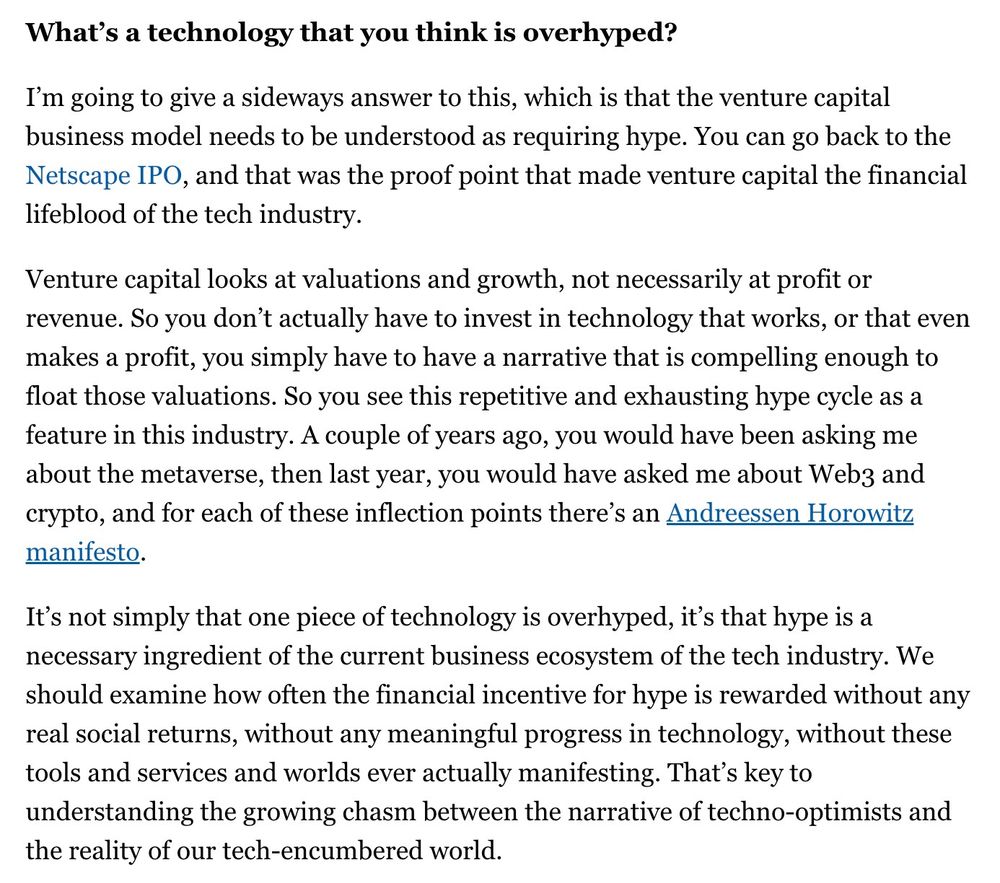
What’s a technology that you think is overhyped?
I’m going to give a sideways answer to this, which is that the venture capital business model needs to be understood as requiring hype. You can go back to the Netscape IPO, and that was the proof point that made venture capital the financial lifeblood of the tech industry.
Venture capital looks at valuations and growth, not necessarily at profit or revenue. So you don’t actually have to invest in technology that works, or that even makes a profit, you simply have to have a narrative that is compelling enough to float those valuations. So you see this repetitive and exhausting hype cycle as a feature in this industry. A couple of years ago, you would have been asking me about the metaverse, then last year, you would have asked me about Web3 and crypto, and for each of these inflection points there’s an Andreessen Horowitz manifesto.
It’s not simply that one piece of technology is overhyped, it’s that hype is a necessary ingredient of the current business ecosystem of the tech industry. We should examine how often the financial incentive for hype is rewarded without any real social returns, without any meaningful progress in technology, without these tools and services and worlds ever actually manifesting. That’s key to understanding the growing chasm between the narrative of techno-optimists and the reality of our tech-encumbered world.
Stand by this: www.politico.com/newsletters/...
19.02.2025 16:42 — 👍 9795 🔁 3193 💬 162 📌 358

Vet found hanging draped in trans flag
The suicide letter they won't publish
This is circulating in my queer political circles but I've otherwise seen no mainstream coverage. This, combined w/ the trans man in upstate New York who was brutalized for months b4 being murdered -- well these are the material impacts of transphobia
zerodoesntsleep.substack.com/p/vet-found-...
15.02.2025 21:48 — 👍 31 🔁 9 💬 0 📌 0
Very excited to have a piece in this new collection. Incredible work by Zach, Melody, and Jennifer!
12.02.2025 04:53 — 👍 26 🔁 4 💬 1 📌 0

The Last Good Dad — Parapraxis
On Fredric Jameson’s pedagogy Nico Baumbach
Great essay on “the desire called ‘Fredric Jameson’,” — @nicobaumbach.bsky.social on the pages of @parapraxismag.bsky.social 📖🖊️⚡️✨
www.parapraxismagazine.com/articles/the...
10.02.2025 21:51 — 👍 25 🔁 13 💬 0 📌 1
I was lucky to read a draft of this incredible book by @loriemerson.net, who has for years thoroughly researched and expanded public understanding of networks. This book, which is beautifully written and designed, *will sell out.* Preorder!! storiesla.com/item/ni6NjGB...
redemmas.org/titles/43727...
10.02.2025 23:42 — 👍 24 🔁 4 💬 2 📌 0
It's appropriate that this sentiment comes after the industry realized that they haven't done anything useful in 20 years so they descended into mass psychosis over tech that does nothing but purports to do everything
06.02.2025 13:18 — 👍 16784 🔁 2524 💬 556 📌 64
Historian of Science interested in the history of astronomy and its material culture @ University of Pittsburgh/ Max Planck Institute for the History of Science
Assemblymember. Democratic Nominee for Mayor of NYC. Running to freeze the rent, make buses fast + free, and deliver universal childcare. Democratic Socialist. zohranfornyc.com
professor guy & professional homosexual.
Professor of American Studies and author of Love’s Next Meeting: The Forgotten History of Homosexuality and the Left in American Culture (UC Press)
Assistant professor, film & media, U of South Carolina. Currently writing on: police body cameras | AI business models | queer games fandom
Chickasaw, Professor of Race, Diaspora, Indigeneity at U Chicago, author of Transit of Empire (Minnesota, 2011) and Indigenomicon (Duke, 2025)
Professor of History. Russia/USSR/IR/War. Author: Russian and Soviet Diplomacy; Russia’s International Relations in the 20th Century. Wargamer. Has a famous game cart he takes to class.
John Merritt Associate Director for Research Services at the Harry Ransom Center; Author of The TVs of Tomorrow-How RCA's Flat-Screen Dreams Led to the First LCDs (Chicago 2018). Posting in a personal capacity.
Annual Conference of the Special Interest Group in Computing, Information, and Society of SHOT. SIGCIS 2025: Power Surge will take place virtually on Sept 25-27. See details and CFP here: https://meetings.sigcis.org/
Professor person in Massachusetts. Environments, technologies, and racial capitalism. Book coming soon: DEMOLISHING DETROIT: HOW STRUCTURAL RACISM ENDURES (Stanford UP, 2025). For more: nickcaverly.com
On the faculty job market!
Presently PhD candidate, @hcii.cmu.edu. Formerly: Adobe, Highsoft, Apple, Visa, + others.
I care a lot about accessible data interaction 📊 (:
Disabled, getting into trouble, & making a ttrpg.
He/him
www.frank.computer
PhD Candidate at Rijksuniversiteit Groningen | Digital Culture, Machine Learning, AI Democratization, Big Tech Critique
The Department of Digital Humanities is a teaching and research unit that focuses on the intersection of interactive technologies and the humanities.
brocku.ca/dh
Performance historian, disability historian.
Disability Works: Performance After Rehabilitation (NYU, 2024)
30% off with code NYUP30
https://nyupress.org/9781479824878/disability-works/
https://linktr.ee/patricktmckelvey
Associate Professor. Drones, AI, war, culture, affect, witnessing. UNSW. Media Futures Hub. ADMS Centre. He/him. Nonhuman Witnessing with @dukepress.bsky.social https://t.ly/cQW5N
phd candidate @ berkeley rhetoric // editor in chief @ qui parle // cybernetics in intellectual history, post-kantian philosophy, media theory
Assistant Professor, Critical AI
tylershoemaker.info
Critical histories and practices of automation and computing in design/architecture. Other stuff too. Associate Prof. @CarnegieMellon. Books: Builders of the Vision, Designing the Computational Image. http://www.dcardo.com
meson press publishes research on digital cultures and networked media. Our publications challenge contemporary theories and advance key debates in the humanities of today.
Dedicated to #openaccess since 2015.
historian of technology www.unil.ch


















